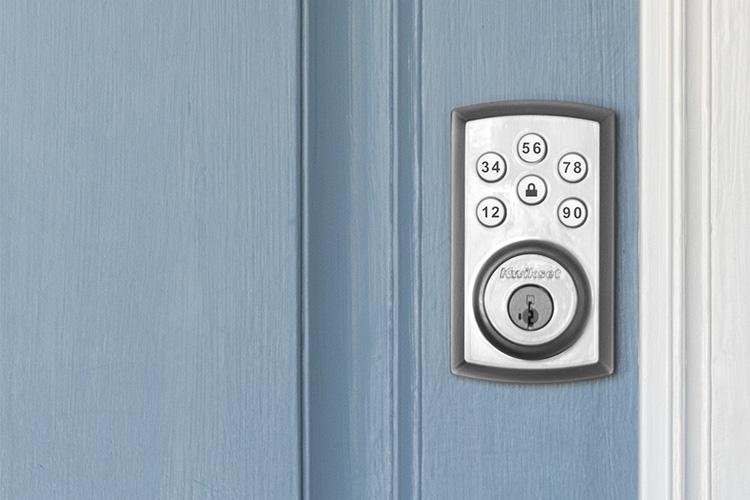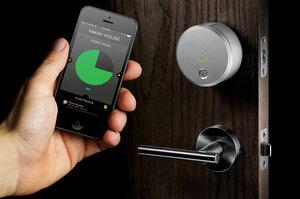Digital home 101: Smart locks to defend your house
When Jason Johnson comes home each night, his front door unlocks before his hand even reaches the knob. The deadbolt knows he's approaching, recognizes him as Jason Johnson, and automatically opens the door.
This touch of science-fiction wizardry comes courtesy of an August Smart Lock. The door attachment works with old-fashioned keys, but also accepts wireless, digital "keys" emitted by smart phones.
"For several hundred years, we've used jagged metal objects to access our homes, but if you look at our cars and many of our offices, we've gotten rid of those keys," says Mr. Johnson, cofounder and chief executive of August. "Really, the last place to get electronic access is the home."

The Goji Smart Lock ($278 for pre-orders, $299 when it goes on sale in March) eschews a keypad. It uses Bluetooth wireless signals, either from a smart phone or a Goji keychain fob ($45). Each device emits a different code, so the lock knows not only that you're on the list, but also whether you're the owner of the house, the baby sitter, or the plumber.
The Goji lock comes with a motion sensor and camera, "so if anyone knocks, we send you an alert with a picture of who's at the door," says Gabriel Bestard-Ribas, founder and chief executive of Goji.
The August Smart Lock ($199 upon release this spring) allows an owner to send out temporary digital keys to anyone's iPhone or Android device. For example, you may invite the cleaners to let themselves in during a scheduled appointment. Once time is up, August automatically revokes their access.
All three of these lock systems are battery operated, so doors will open even during a power outage. Mr. Bestard-Ribas estimates that an average family of four will need to replace the batteries once a year. The lock systems also accept physical keys as backup. While each of the three locks looks rather elegant from the outside, each comes with bulky enclosures on the inside of the door that house the electronics and power pack.
For more on how technology intersects daily life, follow Chris on Twitter @venturenaut.
This article ran in the February 3 issue of the Christian Science Monitor magazine.



